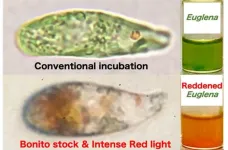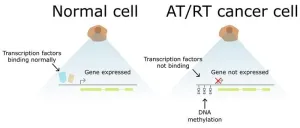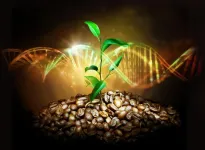(Press-News.org) A University of Michigan study has shown that traumatic experiences during childhood may get "under the skin" later in life, impairing the muscle function of people as they age.
The study examined the function of skeletal muscle of older adults paired with surveys of adverse events they had experienced in childhood. It found that people who experienced greater childhood adversity, reporting one or more adverse events, had poorer muscle metabolism later in life. The research, led by University of Michigan Institute for Social Research scientist Kate Duchowny, is published in Science Advances.
Duchowny and her co-authors used muscle tissue samples from people participating in the Study of Muscle, Mobility and Aging, or SOMMA. The study includes 879 participants over age 70 who donated muscle and fat samples as well as other biospecimens. The participants also were given a variety of questionnaires and physical and cognitive assessments, among other tests.
The researchers examined muscle biopsies to determine two key features of muscular function: the production of adenosine triphosphate, or ATP, and another measure called oxidative phosphorylation, a process that helps produce ATP. Produced by organelles within cells called mitochondria, ATP provides the chemical energy to fuel cellular function.
The researchers also used data from questionnaires that included a set of questions such as: Did a close family member use drugs or alcohol in a way that caused you to worry? Did an adult or parent in your household insult you or put you down? Were you physically abused by a parent or adult in your household? Did you feel loved, important or special in your family? Were either of your parents absent for a portion of your life?
Duchowny found that about 45% of the sample reported experiencing one or more adverse childhood events, and that both men and women who reported adverse childhood events had poorer ATP max production—that is, they weren't producing as much ATP as people who experienced fewer or no adverse events in childhood.
"What these results suggest is that these early formative childhood experiences have the ability to get under the skin and influence skeletal muscle mitochondria, which is important because mitochondrial function is related to a host of aging-related outcomes," Duchowny said. "If you have compromised mitochondrial function, that doesn't bode well for a range of health outcomes, including everything from chronic conditions to physical function and disability limitations."
Study co-author Anthony Molina, professor of medicine at the University of California San Diego, provided expertise in muscle bioenergetics. He and the team looked at images of participants' muscles taken during exercise and during rest inside an MRI machine. Using a technique called 31 PMR spectroscopy, SOMMA researchers were able to determine the rate of ATP synthesis by looking at how fast the muscle was able to synthesize ATP after it was depleted by exercise.
In addition, SOMMA researchers looked at the muscle biopsies of participants. The researchers teased apart the fiber bundles that compose muscle, and examined them using high-resolution mitochondrial respirometry. This technique allowed the researchers to look at the oxygen consumption rate in the muscle fiber bundle and generate a precise readout of muscle mitochondrial function.
"You can think about oxygen consumption rate as a way to measure the flow of electrons that's going through the electron transport train, and it's these electrons that generate the membrane potential that drives the synthesis of ATP," Molina said. "It's a really precise way of assessing mitochondrial bioenergetic capacity."
Previous studies have shown that these measures are closely related to the physical abilities of older adults, Molinda says.
The researchers say the effects of childhood adverse events remained significant even after they controlled for other factors that could potentially impact muscle function such as age, gender, educational attainment, parental education, body mass index, number of depressive symptoms, smoking status and physical activity.
"All of my previous studies have been focused on contemporaneous measures: mitochondria and physical function, mitochondria and cognitive function," Molina said. "These studies have shown that these measures are strongly related to our strength, fitness and numerous conditions that impact physical ability.
"I've also shown that these measures are related to cognitive ability and dementia. But here's the first time we're looking backwards, at what kinds of things that could lead to those differences in mitochondrial function that we know can drive differences in healthy aging outcomes among older adults."
Study: Childhood adverse life events and skeletal muscle mitochondrial function
END
How trauma gets 'under the skin'
2024-04-15
ELSE PRESS RELEASES FROM THIS DATE:
Researchers resolve old mystery of how phages disarm pathogenic bacteria
2024-04-15
MEDIA INQUIRES
WRITTEN BY
Laura Muntean
Ashley Vargo
laura.muntean@ag.tamu.edu
ashley.vargo@ag.tamu.edu
601-248-1891
Depiction ...
Green-to-red transformation of Euglena gracilis using bonito stock and intense red light
2024-04-15
Over the past few years, people have generally become more conscious about the food they consume. Thanks to easier access to information as well as public health campaigns and media coverage, people are more aware of how nutrition ties in with both health benefits and chronic diseases. As a result, there is an ongoing cultural shift in most countries, with people prioritizing eating healthily. In turn, the demand for healthier food options and nutritional supplements is steadily growing.
In line with these changes, Assistant Professor Kyohei ...
New study sheds light on the mechanisms underlying the development of malignant pediatric brain tumors
2024-04-15
A new study conducted by researchers at Tampere University and Tampere University Hospital revealed how aberrant epigenetic regulation contributes to the development of atypical teratoid/rhabdoid (AT/RT) tumours, which are aggressive brain tumours that mainly affect young children. There is an urgent need for more research in this area as current treatment options are ineffective against these highly malignant tumours.
Most tumours take a long time to develop as harmful mutations gradually accumulate in cells’ DNA over time. AT/RT tumours are a rare exception, ...
Evolution's recipe book: How ‘copy paste’ errors cooked up the animal kingdom
2024-04-15
700 million years ago, a remarkable creature emerged for the first time. Though it may not have been much to look at by today’s standards, the animal had a front and a back, a top and a bottom. This was a groundbreaking adaptation at the time, and one which laid down the basic body plan which most complex animals, including humans, would eventually inherit.
The inconspicuous animal resided in the ancient seas of Earth, likely crawling along the seafloor. This was the last common ancestor of bilaterians, ...
Switch to green wastewater infrastructure could reduce emissions and provide huge savings according to new research
2024-04-15
Embargo: This journal article is under embargo until April 15 at 10 a.m. BST/London (5 a.m. EDT/3 a.m. MDT). Media may conduct interviews around the findings in advance of that date, but the information may not be published, broadcast, or posted online until after the release window. Journalists are permitted to show papers to independent specialists under embargo conditions, solely for the purpose of commenting on the work described
University researchers have shown that a transition to green wastewater-treatment approaches in the U.S. that leverages the potential of carbon-financing could save a staggering $15.6 billion and just under 30 million tonnes of CO2-equivalent emissions ...
Specific nasal cells protect against COVID-19 in children
2024-04-15
Important differences in how the nasal cells of young and elderly people respond to the SARS-CoV-2 virus, could explain why children typically experience milder COVID-19 symptoms, finds a new study led by researchers at UCL and the Wellcome Sanger Institute.
The study, published in Nature Microbiology, focused on the early effects of SARS-CoV-2 infection on the cells first targeted by the viruses, the human nasal epithelial cells (NECs).
These cells were donated from healthy participants from Great Ormond Street Hospital (GOSH), University College London Hospital (UCLH) and the Royal ...
Tropical forests can't recover naturally without fruit eating birds
2024-04-15
New research from the Crowther Lab at ETH Zurich illustrates a critical barrier to natural regeneration of tropical forests. Their models – from ground-based data gathered in the Atlantic Forest of Brazil - show that when wild tropical birds move freely across forest landscapes, they can increase the carbon storage of regenerating tropical forests by up to 38 percent.
Birds seed carbon potential
Fruit eating birds such as the Red-Legged Honeycreeper, Palm Tanager, or the Rufous-Bellied Thrush play a vital role in forest ecosystems by consuming, excreting, and ...
Newly sequenced genome reveals coffee’s prehistoric origin story — and its future under climate change
2024-04-15
BUFFALO, N.Y. — The key to growing coffee plants that can better resist climate change in the decades to come may lie in the ancient past.
Researchers co-led by the University at Buffalo have created what they say is the highest quality reference genome to date of the world’s most popular coffee species, Arabica, unearthing secrets about its lineage that span millennia and continents.
Their findings, published today in Nature Genetics, suggest that Coffea arabica developed more than 600,000 years ago in the forests of Ethiopia ...
Human muscle map reveals how we try to fight effects of ageing
2024-04-15
How muscle changes with ageing, and tries to fight its effects, is now better understood at the cellular and molecular level with the first comprehensive atlas of ageing muscles in humans.
Researchers from the Wellcome Sanger Institute and their collaborators at Sun Yat-sen University, China applied single-cell technologies and advanced imaging to analyse human skeletal muscle samples from 17 individuals across the adult lifespan. By comparing the results, they shed new light on the many complex processes underlying age-related muscle changes.
The atlas, published ...
Study shows key role of physical activity and body mass in lung function growth in childhood
2024-04-15
A new study led by the Barcelona Institute for Global Health (ISGlobal), a centre supported by the "la Caixa" Foundation, sheds light on the growth of lung function in children. The results show that increased levels of physical activity and a higher body mass index (BMI) play a key role in the recovery of early deficits. These findings, published in the journal Thorax, have important implications for clinical practice, research and public health policy, providing new insights into how to improve respiratory health from childhood to adulthood.
The study analysed data from the ...





